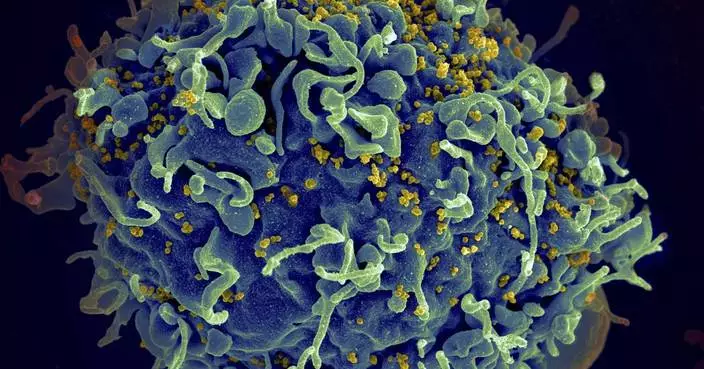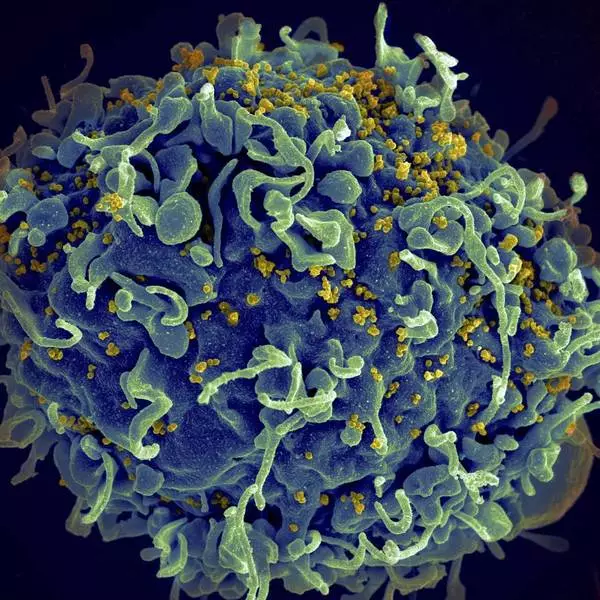HELENA, Mont. (AP) — Thomas Wells ran a half-marathon at age 60 and played recreational volleyball until he was 63. At 65 years old, doctors diagnosed him with mesothelioma, a rare and aggressive lung cancer linked to asbestos exposure.
“I’m in great pain and alls I see is this getting worse,” the retired middle school teacher from Oregon said in a video deposition recorded in March 2020, four months after his cancer diagnosis. He died a day later.
Portions of Wells' deposition were replayed Monday in a federal courtroom for a jury hearing a wrongful death case against Warren Buffett’s BNSF Railway.
The estates of Wells and a second mesothelioma victim accuse the railroad and its corporate predecessors in a lawsuit of polluting Libby, Montana, with asbestos-contaminated vermiculite from a nearby mine that was transported through the remote town’s rail yard in boxcars for much of last century.
BNSF attorneys have denied the claims and are scheduled to lay out their defense beginning Tuesday. They've said that railroad officials were unaware the shipments were hazardous.
A cleanup of the contaminated rail yard in downtown Libby was largely completed in 2022.
The trial is the first alleging BNSF exposed community members in Libby to asbestos fibers that can cause lung scarring and mesothelioma. It comes almost 25 years after federal authorities arrived in the community not far from the U.S.-Canada border following news reports about toxic asbestos dust causing widespread deaths and illnesses among mine workers and their families.
Numerous other lawsuits from asbestos victims have been filed against BNSF.
The W.R. Grace & Co. mine that operated on a mountaintop outside Libby produced contaminated vermiculite that health officials say has sickened more than 3,000 people and led to several hundred deaths.
The U.S. Environmental Protection Agency in 2009 declared the first-ever public health emergency during a Superfund cleanup in Libby. It’s one of the deadliest sites under the federal pollution program. The agency banned remaining industrial uses of asbestos last month.
Wells said in the 2020 deposition that he believed he was sickened while working for the U.S. Forest Service in the Libby area for about six months each in 1976-78 and again in 1981. He never went to the vermiculite mine, he said, but described wind kicking up dust along the railroad tracks at the rail yard.
“It was dusty. You know, you’d wash the car and pretty soon you have to wash the car again,” Wells said.
The second plaintiff, Joyce Walder, played in the same area in her youth before dying of mesothelioma at 66.
Mine operator W.R. Grace repeatedly told the railroad’s corporate predecessors that the product it was shipping through Libby was safe, according to BNSF attorney Chad Knight. Local officials also believed the vermiculite was safe, and the railroad couldn’t legally reject the loads, he said.
“You have to go back and look at what the information was at the time,” Knight told jurors during opening statements last week. “The materials coming from the mine were being used all over town. No one suspected there was anything unsafe about the products.”
Knight has also sought to cast doubt on whether the BNSF rail yard was the source of the plaintiffs’ medical problems, since asbestos dust was prevalent in the Libby area when the mine was operating.
Tainted vermiculite was used in Libby's high school track, a baseball field next to the rail yard, as a soil amendment in home gardens and as insulating material in homes across the U.S.
The plaintiffs’ attorneys showed jurors several insurance claims for tons of asbestos that leaked out of rail cars in the 1970s and did not make it to its destination, and an example of a placard that was put on a rail car in the late 1970s saying it contained asbestos fibers and to avoid creating dust.
Residents of Libby have described encountering vermiculite along BNSF tracks where children in the community often played.
When kicked up by wind or a passing trains, asbestos fibers from that vermiculite “can remain airborne for hours if not days depending on conditions,” said plaintiffs expert Steven Compton, who directs the private laboratory MVA Scientific Consultants in Georgia.
Thomas Wells' son Sean Wells described his father during Friday testimony as a “wonderful teacher” and “just the best dad,” who he could talk to about anything and coached their sports teams.
“There’s not a day that goes by that I don’t think about my dad and wish I could pick up the phone and call him,” Sean Wells said. “He wasn’t only our dad. ... He was our best friend. We did everything together.”
Walder died in October 2020 — less than a month after her diagnosis.
She grew up in Libby and could have been exposed to the microscopic, needle-shaped asbestos fibers while fishing and floating on a river that traveled past a spot where a conveyor belt loaded vermiculite onto train cars, according to court records. Additional exposure may have also come from playing around a baseball field near the rail yard, walking along the railroad tracks and spending time at the home of a friend who lived near the rail yard. She also returned to Libby to visit family.
After her diagnosis Walder underwent chemotherapy and surgery. In a follow-up appointment Walder's family was told the cancer had come back even worse.
“I hope no one has to see the light of hope pass from a parent’s or loved one’s eyes, because that is something you will never forget,” Walder’s daughter, Chandra Zechmeister, testified Monday.
Brown reported from Billings, Mont.

FILE - Environmental cleanup specialists work at an asbestos cleanup site in Libby, Montana, on Sept. 13, 2018. A lawsuit being tried in federal court alleges BNSF Railway knew the vermiculite it was hauling through Libby from a nearby mine was tainted with asbestos. The railroad denies the allegations. (Kurt Wilson/The Missoulian via AP, File)

FILE - The town of Libby, Mont., is seen Feb. 17, 2010. Thousands of people have been sickened and hundreds killed by asbestos contamination in the Libby area. Victims of asbestos exposure are suing BNSF Railway alleging the railroad polluted the town by storing asbestos contaminated vermiculite at a downtown rail yard. The railroad denies the allegations. (AP Photo/Rick Bowmer, File)












